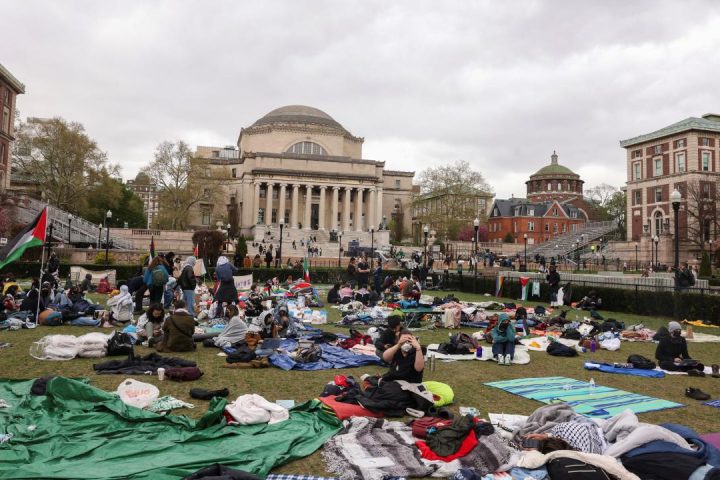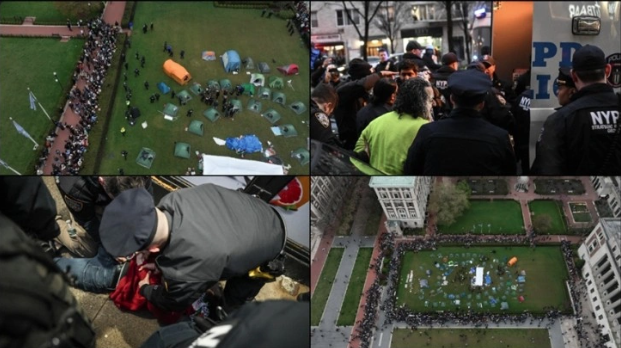A groundbreaking analysis conducted by researchers at NYU Tandon School of Engineering has placed New York City among the top 15% safest cities out of over 800 urban areas across the United States. This pioneering study sheds light on the effectiveness of the city’s strategies in reducing homicides.
Published in Nature Cities, the research paper delves into the correlation between city population size and incidents of gun-related homicides, gun ownership, and licensed firearm vendors. Surprisingly, the study reveals that none of these variables exhibit a linear relationship with population size. In simpler terms, larger populations do not necessarily translate to proportionally higher rates of gun violence, ownership, or availability of firearms across cities. The dynamics at play are far more intricate than anticipated.
In response to this revelation, the researchers introduced a sophisticated analytical tool known as Scale-Adjusted Metropolitan Indicators (SAMIs). This approach aims to eliminate the influence of population size, enabling a fair comparison among cities of varying sizes. By employing SAMIs, the study facilitates an insightful analysis of the complex interplay between firearm violence, gun ownership, and accessibility.
Maurizio Porfiri, the senior author of the paper and Director of the NYU Tandon Center for Urban Science and Progress (CUSP), emphasized the significance of these findings. Contrary to popular belief, per capita rates of gun violence alone do not accurately gauge the efficacy of gun laws or the overall safety of cities. Porfiri elaborated on the study’s insights in a Nature Behind the Paper blog, stressing that some large cities with seemingly higher per capita rates of gun violence may actually demonstrate more effective measures in mitigating firearm-related harms compared to smaller cities with lower per capita rates.
The utilization of SAMI offers a nuanced perspective, challenging conventional assumptions and prompting a deeper understanding of urban firearm dynamics.
Porfiri and Rayan Succar, a Ph.D. candidate in Mechanical Engineering and CUSP, collected and analyzed data on the amount of gun homicides and armed robberies, gun ownership, and licensed gun sellers in about 800 cities ranging in size from about 20 million (metro area) to 10,000.
With SAMI, they uncovered that firearm homicide and robbery rates scale superlinearly, disproportionately concentrating in larger cities like NYC.
In contrast, gun ownership scales sublinearly, with larger cities having fewer guns per capita than their smaller counterparts. Gun violence rates are higher per capita in cities with bigger populations due to the presence of causative factors there, including bigger income disparities and the proximity of people to each other.
By studying cities’ deviations from scaling laws, the researchers established rising homicide rates quantitatively cause more firearm ownership, likely due to self-protection concerns. Easier access to licensed gun sellers also directly drives up ownership, with more access in smaller cities.
“Our research finds evidence for the theory of self-protection, wherein people will buy firearms out of fear for their own and their loved ones’ lives,” said Succar.
The per capita homicide rates in New York City are significantly lower than what urban scaling laws models anticipate, considering the city’s size and its gun ecosystem, researchers found.
“So while many people see New York as unsafe, our population-adjusted analysis makes it clear the city is doing far better on homicide prevention than you’d probably guess. In fact, it comes out on top of the country’s 10 biggest metros,” said Succar.
“Our study provides a robust quantitative basis for evaluating the effectiveness of local policies to reduce shootings,” said Porfiri. “We plan to expand this urban scaling theory and causal discovery approach globally to decode complex dynamics shaping cities worldwide.”
This study contributes to Porfiri’s ongoing data-based research related to U.S. gun prevalence and violence, which he is pursuing as he studies the “firearm ecosystem” in the United States. This is the first of his studies that examines data at the city level. Previous projects looked at data at the state and national level. His published research has focused on motivations of fame-seeking mass shooters, factors that prompt gun purchases, state-by-state gun ownership trends, and forecasting monthly gun homicide rates.
To see the ranked lists of all cities in this study, visit Github. A summary is below:
HOMICIDE SCORES—SAMI
Highest: Cities that experience higher homicide rates than what their size would predict
Helena-West Helena, AR
Clarksdale, MS
Selma, AL
Greenville, MS
Indianola, MS
Grenada, MS
Blytheville, AR
Greenwood, MS
Pine Bluff, AR
Bennettsville, SC
Lowest: Cities that experience lower homicide rates than what their size would predict
Mount Pleasant, MI
Rexburg, ID
Huntingdon, PA
Auburn, IN
Willmar, MN
Fremont, NE
Dickinson, ND
Ithaca, NY
Kearney, NE
Lincoln, IL
FIREARM OWNERSHIP SCORES—SAMI
Highest: Cities that experience higher ownership rates than what their size would predict
Natchitoches, LA
Bastrop, LA
Cleveland, MS
Tuscaloosa, AL
Statesboro, GA
Americus, GA
Brenham, TX
Anniston-Oxford-Jacksonville, AL
Albany, GA
Troy, AL
Lowest: Cities that experience lower ownership rates than what their size would predict
Gallup, NM
Kahului-Wailuku-Lahaina, HI
Auburn, NY
Eagle Pass, TX
Ithaca, NY
Kapaa, HI
Hilo, HI
New York-Newark-Jersey City, NY-NJ-PA
Lamesa, TX
Freeport, IL
LICENSED FIREARM DEALER SCORES—SAMI
Highest : Cities that have more licensed dealers in them than what their size would predict
Prineville, OR
Spearfish, SD
Fredericksburg, TX
Helena, MT
Prescott, AZ
Kalispell, MT
La Grande, OR
Jefferson City, MO
Enterprise, AL
Greeley, CO
Lowest: Cities that have fewer licensed dealers in them than what their size would predict
Pecos, TX
Raymondville, TX
Eagle Pass, TX
El Centro, CA
Clarksdale, MS
Crescent City, CA
New York-Newark-Jersey City, NY-NJ-PA
Santa Cruz-Watsonville, CA
San Francisco-Oakland-Hayward, CA
Salinas, CA
More information: Rayan Succar et al, Urban scaling of firearm violence, ownership and accessibility in the United States, Nature Cities (2024). DOI: 10.1038/s44284-024-00034-8
this news item was previously published on “https://phys.org/





